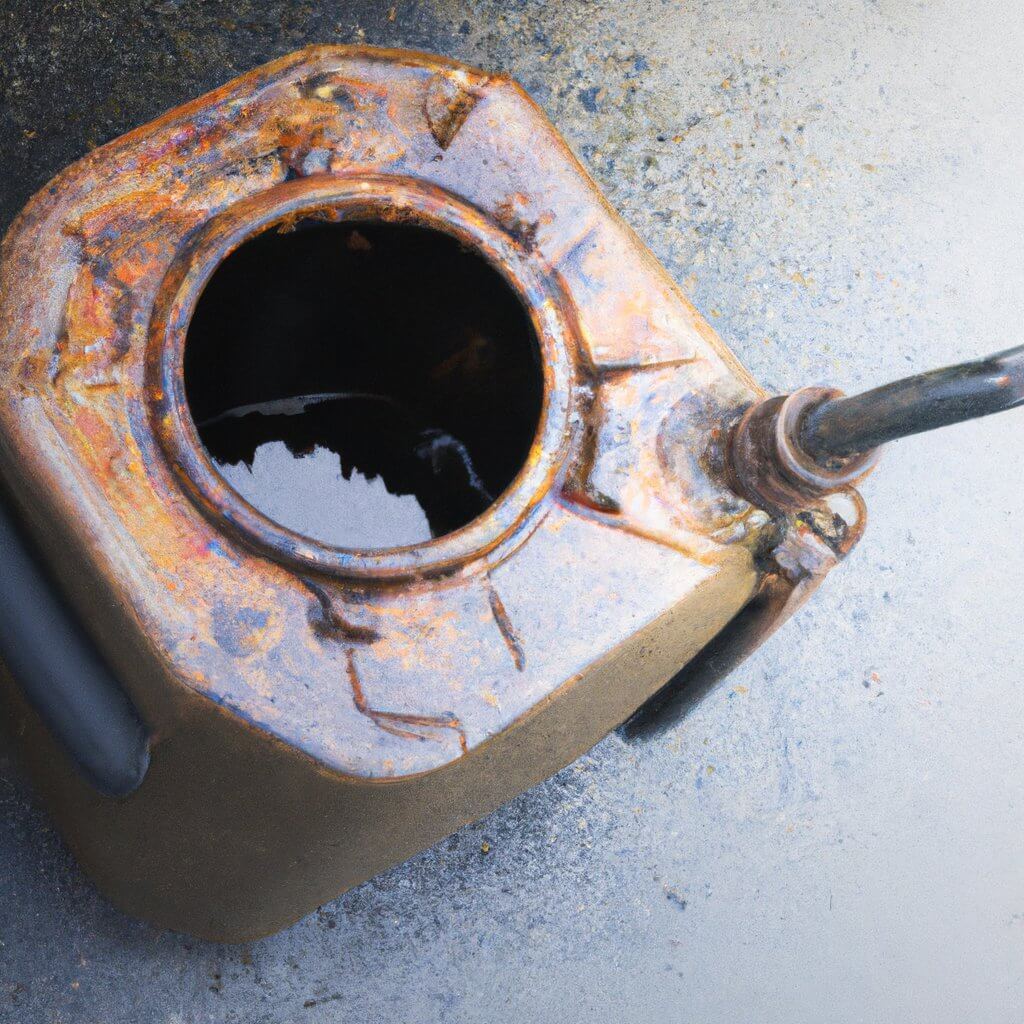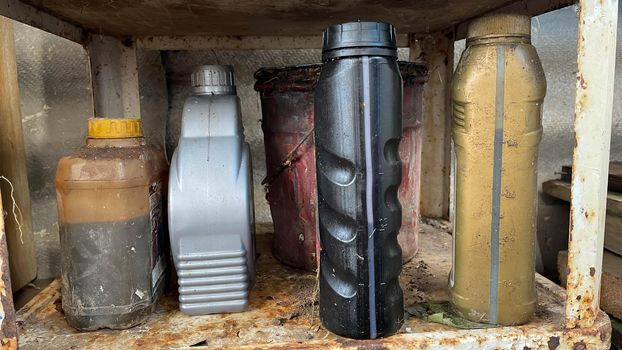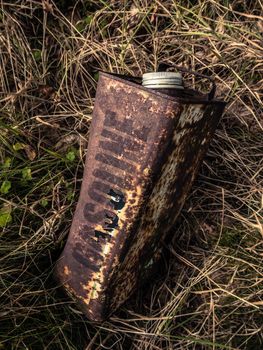- Home
- How to Dispose of Household Hazardous Waste
- How to Dispose of Old Gasoline
how to dispose of old gasoline- The Proper Way to Dispose of Used Gasoline
When it comes to disposing of old gasoline, it’s important to take the proper steps to ensure that you do so safely and responsibly. Gasoline is a combustible product and can be hazardous if not handled carefully, so it’s essential to take the necessary precautions and follow the steps outlined in this blog post
You may find yourself in need of disposing of old gasoline for a variety of reasons, such as when changing out a lawn mower’s fuel tank or when cleaning out an old gas tank in a shed. No matter what the situation, there are a few steps you should follow to ensure that you’re disposing of old gasoline in the safest and most environmentally friendly way possible.
In this blog post, we’ll discuss the steps that you should take to dispose of old gasoline, and provide you with a handy checklist to ensure that you’re taking all the necessary precautions.
When disposing of old gasoline, it is important to remember the potential dangers that may arise from improper disposal. Improper disposal of old gasoline can be incredibly hazardous to the environment and people’s health. If not disposed of correctly, gas can pollute groundwater and other water sources, contaminate soil, and increase air pollution.
Ingestion or inhalation of gasoline vapors can cause serious injury and even death. Additionally, gasoline is a flammable liquid which means that if it were to come into contact with an ignition source such as a spark or flame, it could cause an explosion or fire. Improperly stored or discarded containers filled with old gasoline can also leak and cause contamination, leading to further environmental pollution.
To protect against these risks, it is essential to properly dispose of old gasoline by contacting the local waste authority for advice on safe disposal methods.

1. Ensure appropriate safety precautions are taken when dealing with old gasoline
It is essential to take the necessary safety precautions when disposing of old gasoline. Protective gear such as gloves, goggles, and a face mask must be worn at all times to prevent skin contact with the hazardous material. Additionally, make sure that the area is well-ventilated and away from any open flames or sparks.
When transferring the old gasoline to a container, it is important to use a funnel to minimize spills and ensure that the container is properly labeled so it is known to contain hazardous material. Ultimately, contact your local hazardous waste disposal facility for instructions on how to properly dispose of old gasoline. Following these steps will help protect people and the environment from the potential risks associated with old gasoline.
2. Research local laws and regulations regarding the disposal of gasoline
Before disposing of gasoline, it is essential to adhere to applicable local laws and regulations to ensure compliance with all relevant environmental requirements. Research should be conducted to gain an understanding of the accepted methods of disposal and any other related restrictions in order to ensure the safe handling and disposal of the material.
If appropriate facilities are not available for proper disposal, then alternative methods should be considered and employed where possible in order to minimize potential waste and its associated environmental impacts.
3. Locate an appropriate disposal facility
It is important to ensure that hazardous materials such as gasoline are disposed of properly. Finding the appropriate disposal facility for your old gasoline, therefore, requires diligent research.
Visit the website of your local environmental agency to locate a list of certified facilities capable of receiving hazardous waste or contact them for further information.
Once you have determined which facility works best for you, be sure to inquire about the recommended procedures concerning proper disposal. Following these steps will help ensure that hazardous materials like gasoline are disposed of appropriately and safely.
You may also like other ways to dispose of hazardous household waste

4. Ensure the gasoline is stored and transported in a safe, sealed container
When disposing of old gasoline, it is essential to ensure that it is transported and stored in a safe, sealed container. Leaking containers pose a serious safety risk and can cause substantial environmental damage.
To maintain the integrity of the container, store it in an area away from exposure to direct sunlight and high temperatures.
It is also important to ensure adequate ventilation in order to avoid the build-up of hazardous vapors. Whenever possible, use an approved container specifically designed for storing and transporting gasoline. Additionally, all containers should be clearly labeled with identifying markers indicating hazardous materials. Adhering to these guidelines is required to ensure the safety of both people and the environment.
5. Do not pour old gasoline down the sink or drain
Disposal of old gasoline must be done with care. Pouring gasoline down a sink or drain could have potentially deadly consequences. The gasoline can seep into the water supply, leading to contamination, and worse – it runs the risk of causing explosions if not contained properly in a fuel-only system.
Additionally, there is a significant risk of plumbing damage when gasoline is poured down the sink or drain, as the gas will corrode pipes. As such, it is highly recommended that any old gasoline is taken to an approved hazardous waste disposal facility for safe storage and eventual disposal. In this way, everyone can ensure that the proper safety protocols are followed and that the environment is kept safe from contamination.
6. Take necessary precautions to avoid contact with skin and eyes
When disposing of old gasoline, it is essential to handle the material with caution in order to reduce the risk of potential harm. It is highly recommended that protective gloves and goggles be worn while handling the product, as contact with skin and eyes should be avoided at all costs.
Furthermore, all containers should be sealed tightly and disposed of in accordance with local regulations, ensuring that any potential leakage is avoided.
Lastly, it is important for individuals to keep the old gasoline away from open flames and other sources of ignition, as the fumes could potentially ignite and cause an explosion. Following these simple steps will help ensure the safe and proper disposal of old gasoline.
7. Seek professional help if the gasoline needs to be removed from a larger tank or container
The safest and most reliable way to dispose of large quantities of gasoline stored in a tank or container is to contact a professional hazardous waste disposal provider. Professionals have the necessary equipment, experience, and expertise to safely and efficiently remove any amount of gasoline.
Attempting to handle large amounts of gasoline on your own is highly dangerous and should be avoided under all circumstances. Professional hazardous waste removal companies are well-equipped to conduct the operation in a safe and efficient manner to ensure the health and safety of everyone involved.
8. Do not dispose of gasoline in public or private trash receptacles
When disposing of old gasoline, one should always take it to designated disposal sites or recycling centers. Never dump gasoline in public or private trash containers as this can have serious consequences for both people and the environment.
Not only is gasoline flammable and explosive but also contains volatile organic compounds (VOCs) which can contaminate drinking water sources and harm aquatic wildlife. Furthermore, improper disposal of any kind of hazardous material can incur significant fines or other legal ramifications.
It is vital to be proactive in making sure that all gasoline is disposed of in accordance with local regulations and standards to guarantee safety and reduce potential negative impacts on land, water, and air. Proper disposal of old gasoline is important in order to avoid potential hazards and environmental damage.
When disposing of old gasoline, it is essential to remember the following: Do not dispose of gasoline in public or private trash receptacles. When disposing of gasoline, it should be taken only to designated disposal sites or recycling centers. Improperly disposing of gasoline, such as pouring it down a drain or into a trash receptacle, can be dangerous and cause environmental contamination.

9. Get rid of it yourself
Before disposing of old gasoline, users should inspect it to check for contamination with particles or water, as these can cause it to degrade faster than pure gasoline. Depending on the level of contamination, users may also need to recondition the gasoline by mixing it with fresh fuel and fuel stabilizers for use in small engines, such as lawnmowers and weed eaters.
Before using, always follow manufacturer instructions for the proper use of gasoline in order to avoid overheating and stalling of the machine. Furthermore, fuel stabilizers should always be used to help keep the gasoline from degrading quickly in order to prevent any issues when restarting the machine after a stoppage.
Drainage of old gasoline from a car or truck's tank should only be carried out by a professional with the use of a manual pump and a hose. The drained fuel should then be safely transferred to an appropriate storage container which has been approved by the government for this purpose, as per environmental regulations.
For safety reasons, this should ideally be situated in a location away from minors and pets, such as in the garage or basement, thus keeping it out of reach. Additionally, as prolonged exposure to sunlight can degrade and/or contaminate the substance, it is best not to leave old gasoline outdoors.
Polluting groundwater through the illegal disposal of such hazardous waste must also be avoided, so contact a local hazardous waste center should be contacted in order to properly dispose of it; any associated fees are worth paying for responsible and secure disposal.
10. Take it to a gas station
When it comes to disposing of old gasoline, taking it to a gas station is often the easiest and most convenient route. It is also a safe and affordable way of getting rid of fuel that has become contaminated or degraded. Individuals should start by seeking out a hazardous material collection location to ensure their fuel is accepted for disposal, and confirm all rules for drop-off. It may be necessary to check multiple locations before finding one suitable.
Once a facility has been identified, the individual should transfer the gasoline into an approved container such as a plastic gas can, and fill it with no more than 95 percent of its capacity, to avoid possible spills or fumes while transporting.
Upon reaching the collection point, the fuel should be poured out slowly and safely to prevent any further contamination or hazards. Old gasoline can be disposed of in an environmentally responsible manner with proper care and consideration taken.
When you've finished, it is important to secure the lid tightly to prevent spillage or overturning during transportation. If there will be a delay in using the fuel, store it in an airtight container in an area that is inaccessible to children or pets.
In some cases, it may be possible to mix the old gasoline with fresh fuel; however, this can lead to the degradation of gas quality and contamination and should only be done if instructed in the owner's manual for the vehicle or equipment being used.
To ensure safety and efficiency, it is best to take leftover gasoline to a recycling center or waste disposal facility. This will avoid having to deal with a difficult cleanup while also saving time.
11. Take it to a recycling center
If you have an old vehicle, lawnmower, or storage tank full of gasoline that is no longer serviceable or has become contaminated, it must be disposed of responsibly. To ensure that the gasoline is still viable for use, carefully pour a small amount into a clear glass container to inspect for contaminants.
Once confirmed as usable, transfer the fuel into one of the government-approved fuel containers that are available in five-gallon sizes from gas stations and automotive centers. Upon completing these steps, take the gasoline to the nearest hazardous waste location for disposal.
Alternatively, contact the waste disposal center to arrange a pickup. Adherence to proper procedures is essential, as gasoline is a hazardous material that can cause environmental harm if not managed correctly.
Another great option is to take it to a local recycling center. Here, the gasoline can be processed and repurposed for new use. Before bringing the gas to the facility, it should be stored in a government-approved container such as a plastic gas can or metal safety can that meets OSHA standards.
The individual should also put on a face mask and respirator while transporting the gas to minimize inhalation of any vapor. Inhalation of gasoline vapors may present health risks including nausea, vomiting, dizziness, headache, and unconsciousness.
12.Hire a hazardous waste disposal company
Disposing of hazardous waste, such as old gasoline, requires the use of a professional hazardous waste disposal company in order to do so safely and appropriately. It is important to hire a company with appropriate equipment and expertise for this task, as it can involve specialized instruction or care.
Additionally, some recycling centers will be able to accept hazardous waste if they have been approved by the state; however not all recycling centers are permitted to do so, so it is crucial to call ahead before bringing in the hazardous material. Finally, one should always follow state regulations on how and where to dispose of hazardous material. Failing to do so can result in legal repercussions, and may contaminate water sources and land.
Taking liquid wastes to a landfill designated for their disposal is an option that should be considered when disposing of hazardous materials. These landfills are built with nonporous materials such as clay, high-density polyethylene (HDPE), and other impermeable layers which help protect against leaks that can contaminate the environment.
Furthermore, residential waste removal events can occur where you can bring one collection kit bag per appointment at no cost. However, if there is more waste than the kit bag allows for, then it is recommended to obtain a commercial waste disposal service for the removal of all hazardous materials from your property.
It is important to note that hazardous waste includes materials that are deemed toxic, flammable, carcinogenic or harmful in any way. Proper identification and handling of these substances must be done in order to prevent any damage to human health or the environment.
how to dispose of old gasoline- conclusion
Disposing of old gasoline requires both expertise and caution. It is essential to adhere to the correct protocols, as mishandling can lead to hazardous consequences for the environment and for human health. Environmental spills must be avoided at all times; never pour gasoline into a storm drain or other body of water.
Specialized waste disposal facilities are equipped with the necessary safeguards to ensure that the gas is disposed of safely and responsibly, so it is imperative to take your old gasoline to one of these locations. Following these steps carefully will help you protect the environment and yourself, allowing you to properly dispose of old gasoline in the most efficient manner possible.


